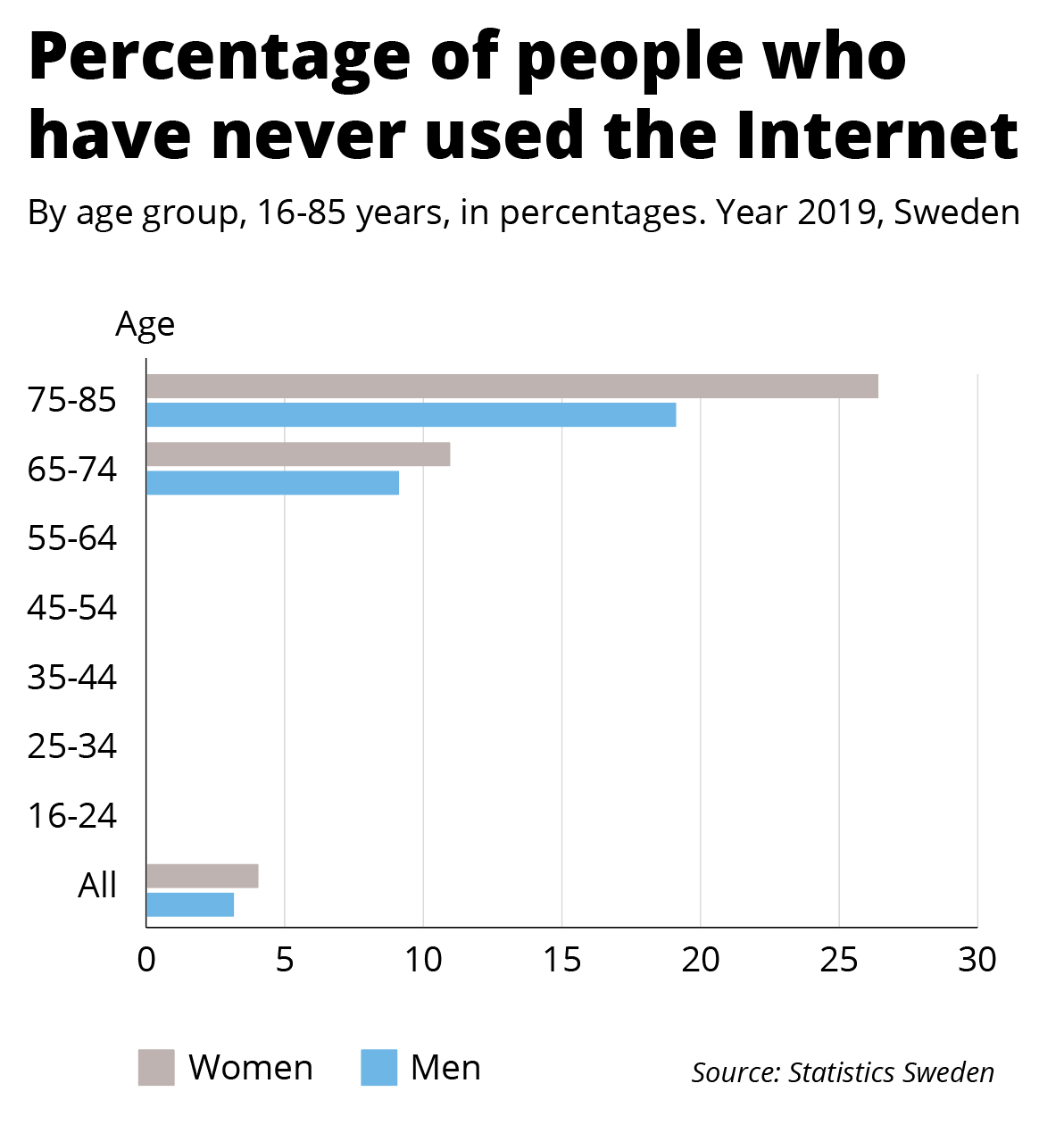Today, it is easier and faster than ever to access digital services offered by the society. It’s such an obvious expectation that the majority of us don’t even think about it. But not for everyone. According to official statistics, there are almost one million Swedes that state that they almost never or never use the Internet.
The availability of digital services on the Internet makes things easier in countless ways and it’s difficult to imagine how society ever functioned without it. With that out-look it is alarming that not everyone has the opportunity to take advantage of the benefits of digitalization. That creates a culture divide in society were part of the population is excluded, a phenomenon called the 'digital divide'.
The digital divide
According to official statistics, almost one million Swedes say that they have never or almost never used the Internet* (SCB). That's almost 10% of the Swedish population. The demographics on this side of the digital divide are striking. The majority is made up of people born outside Europe, people in low-income households and the elderly (for example, 27% of women over the age of 75 have never used the internet). This is a varied group, but it contains some of the most vulnerable members of Swedish society. If you belong to this 10% your ability to live an independent life is limited the more social services are digitized. As the majority of Swedes enjoy ever more flexibility and convenience, the 10% become more and more isolated.

Risk of exclusion increases with age
This is an issue which is not only relevant today, but will be increasingly relevant in the future as more and more of society becomes digitalized. If we do not start to act seriously on the issue of digital exclusion, then we can all look forward to being excluded at some point.
But, increasing the number of services which are available digitally does not have to mean excluding 10% of the population. There are already technologies that can facilitate interaction for many in this isolated group, where different cognitive or physical challenges are contributing to digital exclusion. It is possible to design and build digital services to be universally inclusive - you just have to want to do it.
With joint efforts, from all the different actors - private as well as public - that are pushing digitalization forward, there could be significantly better conditions for many in this group to feel included in the near future.
Reality or a dream?
Greta is 85 with health challenges, wants to order a cake for her birthday. She has a hard time getting to the store and will therefore try to order online, for the first time. She has a tablet device that her son gave her. On the device, he configured a digital identity for her which uses Greta’s voice as the key. This works in the same way as a BankID. This feature is universally valid and is accepted on all national and local authority websites as well as her internet bank.
So, Greta just turns on her tablet, authenticates herself through her voice and explains she wants to order a birthday cake. Once on the bakery’s home page, she browses the options until she finds the cake she wants. She has the option to talk directly to staff at the cake company if she wishes but she doesn’t need to.
During the checkout process, she approves the purchase again using her personal voice ID. She does not have to manually enter the delivery address since that has been taken from her authenticated ID.
In the scenario above what would have been a challenging task for Greta has instead been accomplished with the minimum of friction and the difficult steps in the interaction have been removed or simplified. Greta’s cake is delivered to her door on her birthday.
We are not quite in Greta’s world yet, but we are close. There is a need for much clearer legislation around biometric technologies such as the one described in Greta’s case – so that it can be safely and responsibly integrated into such a solution.
In addition, there needs to be much better support for the kind of seamless, holistic process which Greta experienced (from initial log-on to her device to authorizing payment on a vendor’s eCommerce site) that requires cooperation from many public and private institutions from different parts of Swedish society.
But one thing is certain: it's not today's technology that causes digital exclusion. Technology is a bridge, not a barrier. Instead, today’s exclusion is due to the lack of urgency by those who drive the digitalization agenda of Swedish society and those (like TietoEVRY) who are responsible for the development and delivery of those digital services. This is where the ultimate responsibility sits and if we want to change things, we need to start addressing solutions which include 10%.
TietoEVRY's own Innovation and Design unit, d|lab, is currently running the Florence project together with our digital Welfare unit. Florence is a prototype for a voice assistant for home care service users. It is precisely this target group that has difficulty accessing digitalization opportunities. Our focus has been to investigate how we with this solution might reduce the digital divide, with a focus on universal inclusive design.